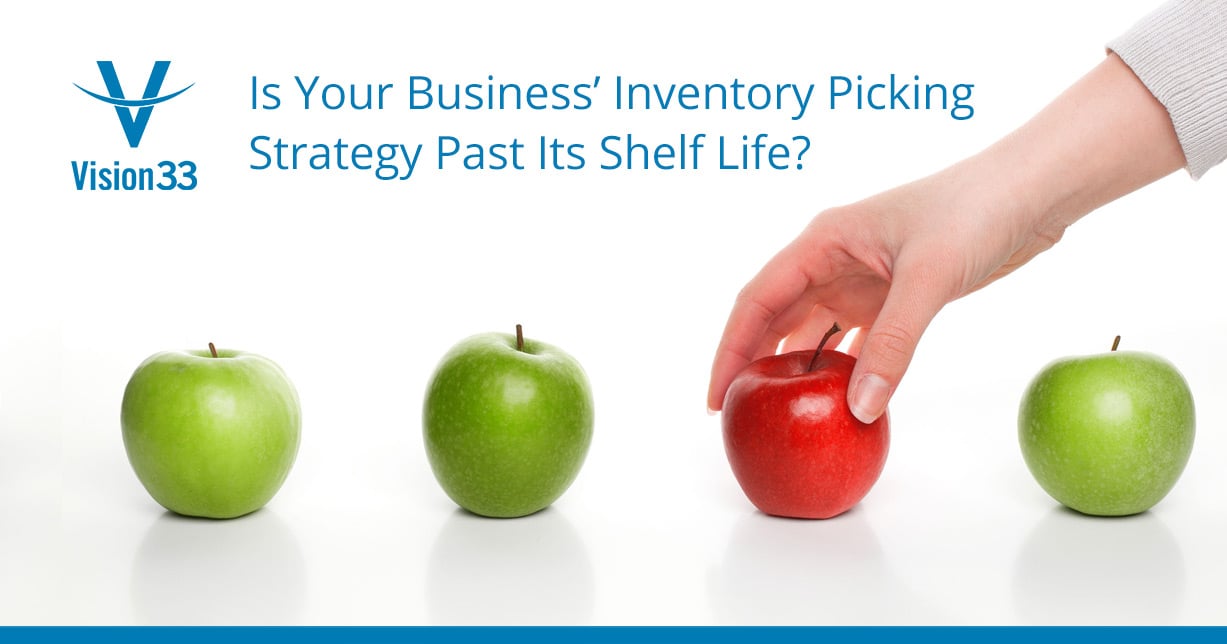Food and beverage manufacturers running legacy systems often record product expiration dates manually – a time-consuming and error-prone process that often delays invoicing and shipping. Learn how to efficiently manage FEFO inventory for incoming and outgoing stock. Read the article.

In the perishable food and beverage products category, losses often occur en route from farm to fork. Temperature, moisture, and other factors affect the growth rates of organisms that cause spoilage. It’s hardly surprising that there has been an explosion of novel technologies designed to extend the freshness and quality of food, including physical, chemical, and bio-preservation methods. But one of the most effective ways to maximise shelf life is closer managing of a small to midsized enterprises (SME's) supply chain to try to ensure the right product is delivered at the right time, in the right condition.
Maximising shelf life of an SME's products involves a strategic shift in warehouse operations from purely efficiency-driven order picking methods to pick products according to each specific customer’s needs and replenishment policies. It may sound obvious, but there’s traditionally been a lot of emphasis on minimising travel time and maximising productivity.
Order picking is one of the costliest activities in a typical warehouse measured by time and money. But it’s also the activity that plays the biggest role in customer satisfaction with the warehouse and, ultimately, an SME's supply chain. If a business can’t optimise picking for shelf life, it risks affecting profitability (through product returns or expired stock on the shelf) as well as to your customer service level and therefore brand image.
The FIFO Approach
Most business management solutions on the market such as enterprise resource planning (ERP) weren’t designed for the dynamics of the food industry. They lack the functionality to manage perishable food and beverage product variables like shelf life and expiry date. If a business has an older warehouse management system (WMS), it may have been built primarily to reduce the cost of business operations. In pursuit of efficiency, businesses may have adopted a first-in-first-out (FIFO) approach – a logical choice for food and beverage product rotation.
But this assumes that all products arriving on a date have the same shelf life potential, which is not always the case. And if a WMS can’t talk to other systems in the supply chain network, this will inevitably lead to disjointed and inaccurate transfers of information and a lack of visibility across your trading partners.
The FEFO Approach
SMEs can add value to their supply chain with an ERP solution that considers the estimated remaining shelf life of the product and matches it to the requirements of the next part of the handling chain. A first-expired-first-out (FEFO) strategy, based on a data-driven approach, will pick products depending on their shelf life potential about their end destination.
Your system should have the functionality to support a definition of “freshness requirements” by the customer, and to track the age, best before or expiry date of each product batch/lot. It should enable a picking process that suggests the oldest lots for picking which meet the customer’s freshness requirements, either by age or remaining days before use by/expiration date. So, for example, a customer that is local to you might be able to take older product than one that is further away, once transportation time is considered.
Just as much as managing product self-life is important, shorter delivery times are equally important to improving customer satisfaction. However, the main obstacle is to overcome lay in efficiently managing FEFO inventory for incoming and outgoing stock. SME's running legacy systems often record product expiration dates manually – a time-consuming and error-prone process that often delays invoicing and shipping.
The Solution
By implementing an integrated ERP solution for Food and Beverage Manufacturers/Distributors, SMEs can take receipt of products in the warehouse more efficiently. Warehouse staff can capture expiration dates with handheld scanners, eliminating the manual data entry and human errors. Outbound logistics are automated, dramatically improving picking, packing and shipping processes. SME management has access to the insight they need to improve inventory management, with a unified dashboard that offers full visibility into vendor performance, product movement and customer orders.
To find out more about how Vision33's ERP solution for Food and Beverage Manufacturers/Distributors can help you to optimise your picking strategy for shelf life, read this solution brief.


